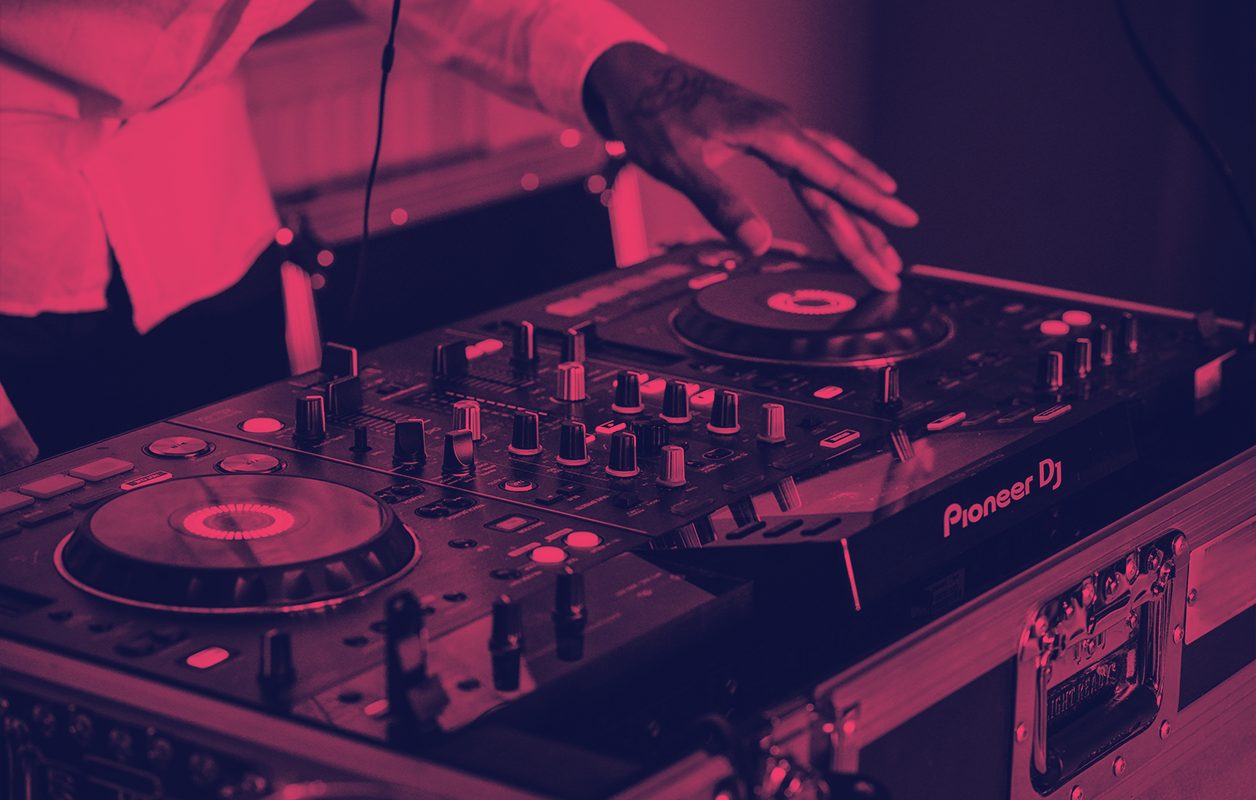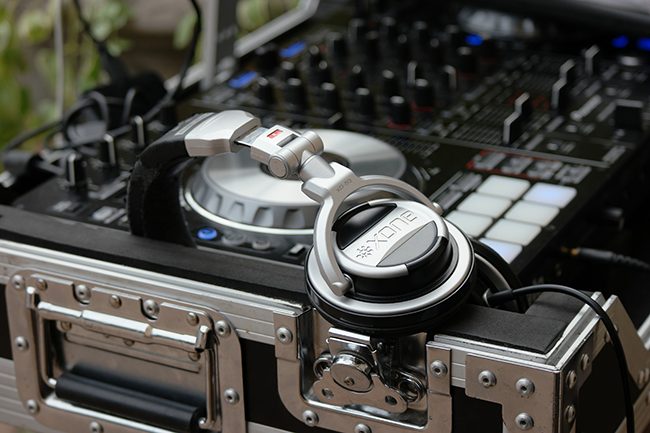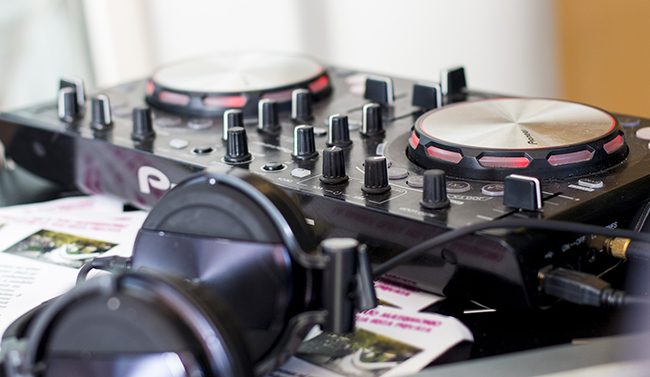
Mobile DJing can be a lucrative way to be your own boss and earn a living doing what you love. As a mobile DJ, you not only bring the music, but in many cases the speakers, DJ equipment, lights, and microphones. Mobile DJs are always in demand to provide music and entertainment for weddings, corporate events, birthday parties, restaurants, bars, holiday parties, and other events. Even if you have no following, you can still earn a living because you deliver a much-needed service to your community.
Keep reading to learn some best practices for successfully breaking into the world of mobile DJing!

Before Seeking Work
Master the Art of DJing
Make sure you understand the basics of DJing and are very comfortable with your DJ software of choice. Learn beat matching, musical keys, and blending so you can move seamlessly from song to song. Have some other transitions, such as the ‘echo out,’ in your toolbox. Also, understand how various BPMs can change the mood of your audience and how to choose music that captures the energy of different moments of an event.
Build a Library
Add songs you personally love and know. Add all songs on the current Billboard Hot 100, and songs that have charted yearly since 1960. Add the most recognized songs in each genre. Add songs that show up in searches such as “Top Party Songs” and “Top Group Dance Songs.” Also, observe other DJs to see what songs they are playing. Add any songs you hear from cars or in restaurants. Update your library weekly with whatever is currently charting on Billboard.
Although there are mobile DJ gigs in all genres, the most popular genre you will be playing is Top 40/open format, so it pays to have a large library in this genre. Rather than paying $0.99 to download every single song for your library, subscribe to one or more record pools such as BPM Supreme. Consider using a music streaming service, for example Tidal or Soundcloud, that integrates with your DJ software so you can handle requests that are not in your library.
Set Up Cue Points in Your Songs
Such as when the vocals start or the choruses end. This way, you don’t end up mixing vocals over one another and can blend into a new song before the old song ends.
Invest in Equipment
Invest in a portable DJ setup, such as a controller, CDJs, or vinyl. It’s important to buy at least two professional-grade speakers that you can transport with you. Consider a third speaker in case a wedding party needs music for a cocktail hour or if one of your speakers breaks down. Use a high-powered laptop so that your DJ software can play each song smoothly without skipping. You don’t want to ruin the dance floor because the crowd’s favorite song suddenly stops. Consider purchasing a high-frequency wireless microphone so that you can make announcements, Emcee, or pass the mike to a guest who wants to do a wedding toast. Although quality equipment can get pricy, many stores offer rentals or credit card purchases, or you can buy the equipment used.
Getting the Gig
Create Marketing Materials
Create a website and social media profiles for your DJ brand. Upload photos and a bio. Record a few mixes to post on your website or Mixcloud profile. Be sure to include at least one Top 40/open format mix. Post videos of yourself DJing, ideally to a crowd. Make business cards. Create a resume; include your experience or past DJ gigs and a list of the equipment you’ll provide.
Reach Out to Clients
Contact entertainment and mobile DJ companies. In many areas, companies are actively seeking junior employees and are willing to provide paid training and even loan equipment to DJs who do gigs on their behalf. These companies advertise for junior DJs on career sites such as Indeed. Sometimes companies need a DJ who can fill in if one of their regular DJs backs out or if a client has a sudden need for a DJ. Ask friends and family who have upcoming events if they need a DJ. Contact wedding and event planners. Visit or email local bars, venues, hotels, and banquet halls. Consider posting ads on bulletin boards and joining websites such as Gigmasters that connect DJs with clients.
Preparing for Your Gigs
Get Your Music Ready
Ask the client what music they expect. Do they have specific songs they want to hear or a specific playlist? You should know music well enough to be able to create a full library of songs based on a few of their suggestions. Once you have this information, build a folder of songs you might play at the event and include at least twice as much music as the length of the event.
Get Familiar With the Setup of the Venue
What equipment do they have, and what must you provide? Where will you set up, where will you put the speakers, and where are the outlets located? Where will you unload your equipment and park your vehicle? If you have time, visit the venue before your gig and get familiar with all of these things!
Prepare Yourself for Mishaps
Arrive early so you can pace yourself when setting up equipment and check your sound. Bring backup equipment and power strips. It’s always good to bring an extension cord in case the power supply is far from where you will set up. A power strip is important because you will likely need at least four outlets for your equipment. Consider bringing a backup laptop or music supply.

During and After the Gig
Observe the Crowd
And whether they are dancing to your music! Once again, your music knowledge will come into play because if a crowd likes a certain song, you can maintain the energy by playing similar songs. If a crowd does not like a certain song, consider switching to a new style after the next chorus. This is where your cues will help.
Reflect and Learn
Don’t forget to thank the client! Add this gig to your resume. Reflect on the experience and keep going!
These are some best practices to break into mobile DJing. Of course, as you embark on your DJ journey, you will develop your own style and approach. Best of luck in your career, and don’t forget to have fun!

